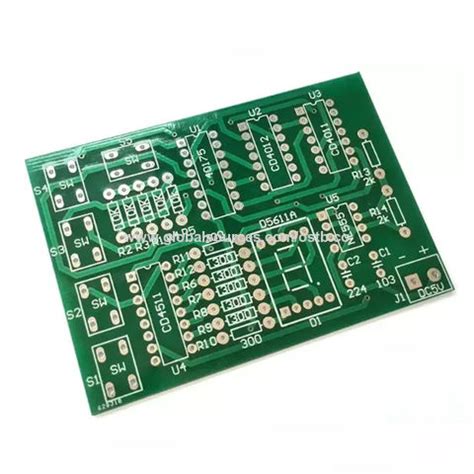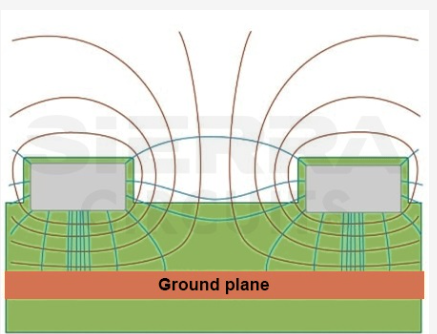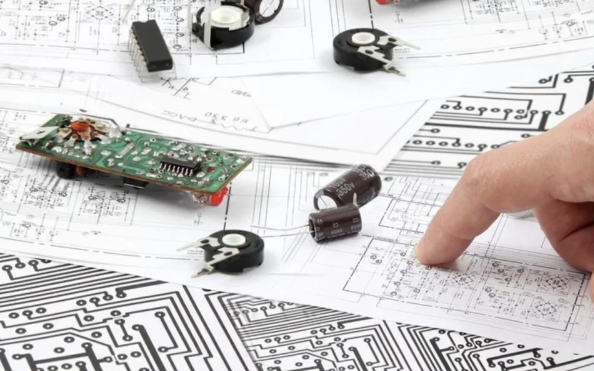Flex pcb maximum current
Understanding Flex PCB Maximum Current Ratings
Understanding the maximum current ratings for flexible printed circuit boards (flex PCBs) is crucial for ensuring the reliability and performance of electronic devices.
Flex PCBs, known for their ability to bend and conform to various shapes, are widely used in applications where space constraints and mechanical flexibility are paramount.
However, their unique structure and material composition necessitate careful consideration of current-carrying capabilities to prevent overheating and potential failure.
To begin with, the maximum current rating of a flex PCB is influenced by several factors, including the thickness of the copper traces, the width of the traces, the ambient temperature, and the overall design of the circuit. Copper thickness, typically measured in ounces per square foot, directly impacts the current-carrying capacity. Thicker copper traces can handle higher currents due to their lower resistance, which reduces the amount of heat generated. Conversely, thinner traces have higher resistance and are more prone to overheating when subjected to high currents.
The width of the copper traces also plays a significant role in determining the maximum current rating.
Wider traces can dissipate heat more effectively, allowing them to carry higher currents without exceeding safe temperature limits. In contrast, narrow traces concentrate the current flow, increasing the risk of localized heating and potential damage. Therefore, designers must carefully balance trace width and copper thickness to optimize current-carrying capacity while maintaining the flexibility and compactness of the flex PCB.
Ambient temperature is another critical factor that affects the maximum current rating of a flex PCB.
Higher ambient temperatures reduce the ability of the PCB to dissipate heat, thereby lowering the maximum current it can safely carry. Conversely, lower ambient temperatures enhance heat dissipation, allowing for higher current ratings. It is essential to consider the operating environment of the flex PCB and account for temperature variations when determining the maximum current rating.
Moreover, the overall design of the flex PCB, including the layout and arrangement of components, can influence its current-carrying capacity.
Proper spacing between traces and components is vital to ensure adequate heat dissipation and prevent thermal buildup. Additionally, incorporating thermal vias and heat sinks can enhance heat management, allowing the flex PCB to handle higher currents. Designers must also consider the potential for hot spots, which can occur in areas with high current density, and take steps to mitigate their impact.
To accurately determine the maximum current rating of a flex PCB, designers often rely on industry standards and guidelines, such as those provided by the Institute for Printed Circuits (IPC). These standards offer detailed recommendations for trace width, copper thickness, and other design parameters based on the desired current-carrying capacity. Additionally, simulation tools and thermal analysis software can help predict the thermal performance of a flex PCB under various operating conditions, enabling designers to make informed decisions.
In conclusion, understanding the maximum current ratings for flex PCBs is essential for ensuring their reliable operation in electronic devices. Factors such as copper thickness, trace width, ambient temperature, and overall design must be carefully considered to optimize current-carrying capacity and prevent overheating. By adhering to industry standards and utilizing advanced design tools, designers can create flex PCBs that meet the demanding requirements of modern electronic applications while maintaining their inherent flexibility and compactness.

Factors Influencing Maximum Current in Flex PCBs
Flexible printed circuit boards (Flex PCBs) have become increasingly popular in various industries due to their versatility, lightweight nature, and ability to conform to complex shapes. However, one critical aspect that engineers and designers must consider when working with Flex PCBs is the maximum current they can handle. Several factors influence the maximum current capacity of Flex PCBs, and understanding these factors is essential for ensuring the reliability and performance of electronic devices.
Firstly, the material composition of the Flex PCB plays a significant role in determining its current-carrying capacity.
Flex PCBs are typically made from polyimide or polyester substrates, which offer excellent thermal stability and mechanical flexibility. The choice of substrate material can impact the thermal conductivity and, consequently, the heat dissipation capabilities of the PCB. Polyimide, for instance, has superior thermal properties compared to polyester, allowing it to handle higher currents without excessive temperature rise.
In addition to the substrate material, the thickness of the copper traces on the Flex PCB is another crucial factor.
Thicker copper traces can carry more current due to their lower electrical resistance. However, increasing the thickness of the copper traces also adds to the overall weight and cost of the PCB. Therefore, designers must strike a balance between the desired current capacity and the practical limitations of weight and cost. Typically, Flex PCBs use copper thicknesses ranging from 0.5 oz/ft² to 2 oz/ft², with higher thicknesses reserved for applications requiring higher current loads.
Moreover, the width of the copper traces is directly proportional to the current-carrying capacity of the Flex PCB.
Wider traces have lower resistance and can carry more current without significant heating. However, the available space on the PCB often constrains the width of the traces, especially in compact and densely populated designs. Therefore, optimizing the trace width within the given space constraints is essential for maximizing the current capacity.
Another factor to consider is the ambient temperature and the operating environment of the Flex PCB.
Higher ambient temperatures can reduce the maximum current capacity of the PCB due to increased thermal stress. Therefore, it is crucial to account for the operating temperature range and ensure adequate cooling mechanisms are in place. This may involve incorporating heat sinks, thermal vias, or other cooling solutions to dissipate heat effectively and maintain the PCB’s performance.
Furthermore, the layout and design of the Flex PCB can significantly impact its current-carrying capacity.
Proper spacing between traces, vias, and components is essential to prevent overheating and ensure reliable operation. Additionally, the use of multiple layers in the Flex PCB can help distribute the current load more evenly and reduce the overall resistance. However, multi-layer designs can be more complex and costly, so careful consideration is required during the design phase.
Lastly, the type of application and the specific requirements of the electronic device also influence the maximum current capacity of the Flex PCB.
For instance, applications involving high-power components, such as motors or power amplifiers, may require Flex PCBs with higher current capacities. On the other hand, low-power applications, such as wearable devices or sensors, may have less stringent current requirements.
In conclusion, several factors influence the maximum current capacity of Flex PCBs, including the material composition, copper trace thickness and width, ambient temperature, layout and design, and the specific application requirements. By carefully considering these factors during the design and manufacturing process, engineers can ensure that Flex PCBs meet the necessary current-carrying capacity and deliver reliable performance in various electronic devices.

Designing Flex PCBs for Optimal Current Capacity
Designing Flex PCBs for optimal current capacity requires a comprehensive understanding of various factors that influence the current-carrying capabilities of these versatile circuit boards. Flex PCBs, or flexible printed circuit boards, are increasingly popular in modern electronics due to their ability to bend and conform to complex shapes, making them ideal for applications where space and flexibility are paramount. However, ensuring that these boards can handle the required current without overheating or failing is crucial for their reliable performance.
One of the primary considerations in designing Flex PCBs for optimal current capacity is the thickness of the copper traces.
The current-carrying capacity of a trace is directly proportional to its cross-sectional area. Therefore, increasing the thickness of the copper can enhance the current capacity. However, this must be balanced against the need for flexibility, as thicker copper can reduce the board’s ability to bend. Designers often use a combination of thicker copper for high-current traces and thinner copper for low-current traces to achieve an optimal balance.
Another critical factor is the width of the traces. Wider traces can carry more current due to their larger surface area, which helps dissipate heat more effectively.
However, the available space on the Flex PCB can limit the width of the traces. Therefore, careful planning and layout are essential to maximize the trace width within the constraints of the design. Additionally, using multiple layers can help distribute the current load and reduce the risk of overheating.
The choice of materials also plays a significant role in determining the current capacity of Flex PCBs.
Polyimide is a common substrate material used in Flex PCBs due to its excellent thermal stability and mechanical properties. However, other materials such as polyester can also be used, depending on the specific requirements of the application. The thermal conductivity of the substrate material affects the board’s ability to dissipate heat, which in turn influences the maximum current capacity.
Thermal management is another crucial aspect of designing Flex PCBs for optimal current capacity.
Effective heat dissipation is essential to prevent overheating and ensure reliable operation. This can be achieved through various methods, such as using thermal vias, heat sinks, and thermal pads. Thermal vias are small holes filled with conductive material that help transfer heat from the surface of the board to the other side, where it can be dissipated more effectively. Heat sinks and thermal pads can also be used to draw heat away from critical components and traces.
Moreover, the operating environment of the Flex PCB must be considered when designing for optimal current capacity.
Factors such as ambient temperature, airflow, and the presence of other heat-generating components can significantly impact the board’s ability to handle current. For instance, a Flex PCB operating in a high-temperature environment may require additional cooling measures to maintain its current-carrying capacity.
In conclusion, designing Flex PCBs for optimal current capacity involves a careful balance of various factors, including copper thickness, trace width, material choice, and thermal management. By considering these elements and their interplay, designers can create Flex PCBs that not only meet the current requirements of their applications but also maintain reliability and performance under varying conditions. As technology continues to advance, the demand for flexible and efficient circuit solutions will only grow, making the optimization of current capacity in Flex PCBs an increasingly important aspect of electronic design.

Common Mistakes in Estimating Flex PCB Maximum Current
When estimating the maximum current that a flexible printed circuit board (flex PCB) can handle, several common mistakes can lead to inaccurate calculations and potentially detrimental outcomes.
One of the most frequent errors is neglecting the unique thermal properties of flex PCBs.
Unlike rigid PCBs, flex PCBs are made from materials such as polyimide, which have different thermal conductivity and heat dissipation characteristics. Failing to account for these differences can result in underestimating the heat generated by the current, leading to overheating and potential failure of the circuit.
Another prevalent mistake is overlooking the impact of the flex PCB’s design on current-carrying capacity.
The width and thickness of the copper traces play a crucial role in determining how much current a flex PCB can safely carry. Designers often use standard formulas intended for rigid PCBs without adjusting for the specific parameters of flex PCBs. This can lead to either overestimating or underestimating the maximum current capacity. For instance, narrower or thinner traces will have higher resistance, generating more heat for a given current, which must be factored into the calculations.
Additionally, the environment in which the flex PCB operates is often not given due consideration.
Flex PCBs are frequently used in dynamic applications where they may be subject to bending, twisting, and other mechanical stresses. These conditions can affect the current-carrying capacity by introducing additional resistance and potential points of failure. Ignoring these environmental factors can result in designs that perform well under static conditions but fail when subjected to real-world stresses.
Furthermore, the importance of proper thermal management is sometimes underestimated.
Effective heat dissipation mechanisms, such as thermal vias, heat sinks, or even the strategic placement of components, are essential for maintaining the integrity of the flex PCB under high current loads. Designers who do not incorporate adequate thermal management solutions may find that their flex PCBs cannot handle the expected current without overheating.
Another common oversight is the assumption that all flex PCBs will behave similarly under identical conditions.
Variations in manufacturing processes, material quality, and even slight differences in design can lead to significant discrepancies in current-carrying capacity. Therefore, relying solely on theoretical calculations without empirical testing can be a risky approach. It is crucial to validate designs through rigorous testing to ensure that the flex PCB can handle the intended current in its specific application.
Moreover, the role of connectors and interconnects is often underestimated.
These components can introduce additional resistance and potential points of failure, especially in high-current applications. Ensuring that connectors are rated for the expected current and that they are properly integrated into the design is essential for maintaining the overall reliability of the flex PCB.
Lastly, the dynamic nature of current loads in many applications is sometimes not fully considered.
Flex PCBs used in applications with fluctuating current demands must be designed to handle peak currents, not just average loads. Failing to account for peak current can lead to designs that are insufficiently robust, resulting in potential failures during periods of high demand.
In conclusion, accurately estimating the maximum current that a flex PCB can handle requires a comprehensive understanding of its unique properties, careful consideration of design parameters, and thorough testing. By avoiding these common mistakes, designers can ensure that their flex PCBs perform reliably and efficiently in their intended applications.







